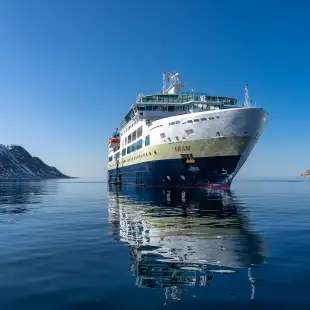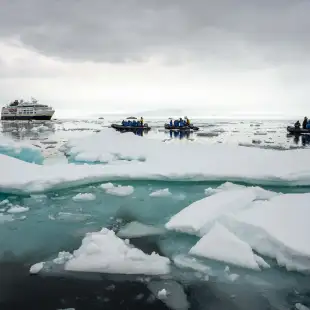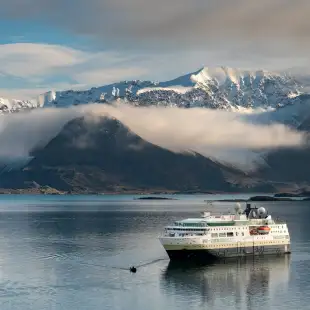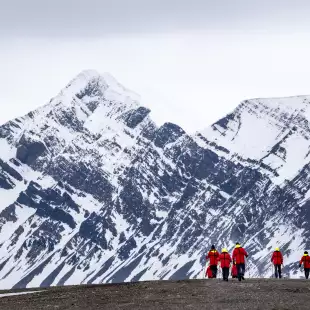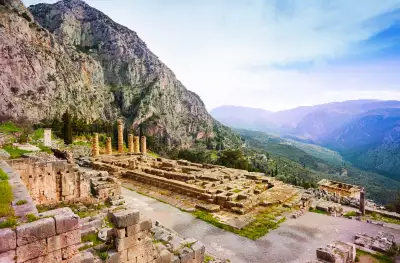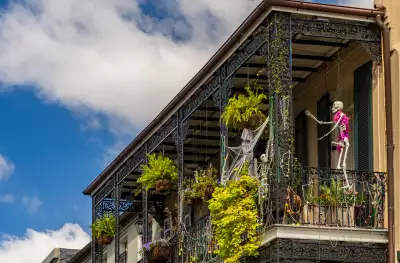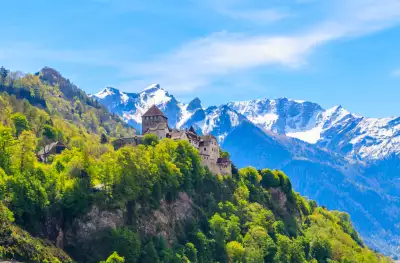Everything you need to know before you visit Svalbard
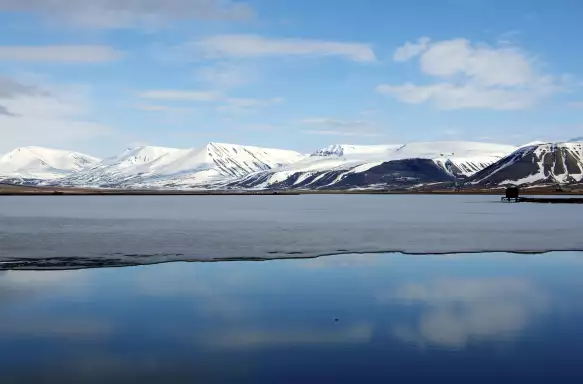
In Svalbard, nature reigns supreme; polar bears outnumber humans, and the landscapes have been shaped by glaciers over millions of years. The normal rules don't apply here, which is likely why the sun doesn't set for months on end. Welcome to the edge of the world.
Where is Svalbard?
Svalbard is a remote archipelago in the Arctic Ocean. Officially, it's part of Norway, but it's located nearly 1,000km north of the mainland. It's one of the world's northernmost inhabited areas, nestled between mainland Europe and the North Pole - it's so far north that it's closer to the North Pole than it is to Oslo.
You can think of it as Norway's wild, icy frontier. The name 'Svalbard' means 'cold coast' in Old Norse, which feels like an understatement if you step outside in February. But don't let its latitude fool you - it's more than just snow and silence. It's a region of glaciers and fjords, of midnight suns and polar nights, polar bears and puffins. And it's home to the world's most northernmost everything: post office, university, brewery - even kebab van. (Don't believe us? It's called "The Red Polar Bear").
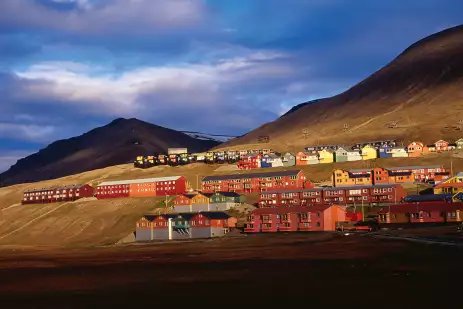
The capital city of Svalbard is Longyearbyen - a surprisingly lively town with around 2600 residents (depending on the season). Despite its reasonably small size, there's a lot going on - from food and jazz festivals to literary festivals and choir concerts. It's the kind of place where you can take your shoes off in restaurants (a charming tradition from the coal dust era). A unique blend of frontier town and global village. Its population includes Norwegians, Russians, Ukrainians, and scientists from around the world. It’s also home to the Svalbard Global Seed Vault - a secure facility that stores backup copies of the world’s crop seeds, just in case. Add to that a thriving tourism scene, a university, and a surprisingly good coffee culture, and you’ve got a community that’s as resilient as it is remote.
What to do in Svalbard?
Svalbard may be remote, but it's anything but empty. This Arctic archipelago offers a surprisingly rich tapestry of experiences—especially for those who like their adventures with a side of snow goggles.
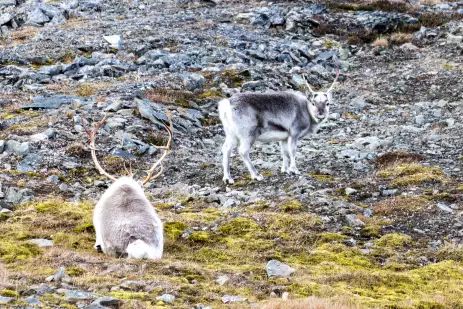
Spot wildlife in Svalbard
The Norwegian archipelago is one of the best places on Earth to spot polar bears in the wild - from a safe distance, of course. With an estimated population of 3,000, there are more polar bears here than people, and the summer months are the best time to spot them.
But bears are just the beginning. Svalbard’s walrus population is thriving, and these sociable giants are often seen lounging in groups on ice floes or beaches, their long tusks and twitching whiskers making them look like Arctic aristocrats at rest. Reindeer are practically locals in Longyearbyen, wandering through town like they own the place. These short-legged, thick-coated creatures are unique to Svalbard and have no natural predators, so they’re unbothered by human presence.
Arctic foxes, with their seasonal coats and curious eyes, dart across the tundra in search of food, while ringed seals - favourite snacks of polar bears - can often be seen bobbing in the icy waters. And then there are the whales: belugas, humpbacks, and even the elusive blue whale make appearances in the summer months, drawn by the rich feeding grounds around the archipelago.
Birdwatchers will be in heaven. Svalbard hosts millions of migratory birds in the spring and summer, where they breed on its cliffs and islands. Puffins, guillemots, kittiwakes, and ivory gulls fill the skies and the soundscape, creating a flurry of activity that’s as thrilling to hear as it is to see. Whether you’re a seasoned birder or just someone who appreciates a good puffin, the avian life here is nothing short of spectacular.
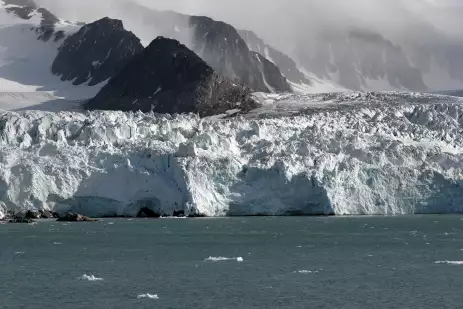
Enjoy the natural landscapes
Svalbard's landscapes are vast, dramatic, and utterly humbling. Approximately 60% of the region is covered in glaciers, which spill into the sea in towering, jagged formations sculpted by time itself. These icy giants are alive, shifting and creaking as they slowly reshape the land. Between them lie deep fjords carved by ancient glacial movement, their still waters reflecting snow-capped peaks and the occasional drifting iceberg.
The rest is frozen tundra, where the ground beneath your feet is permanently frozen - permafrost, to give it its proper name. In summer, the top layer thaws just enough to allow hardy mosses, lichens and tiny flowering plants to unleash their bursts of colour against the otherwise stark terrain - few trees grow here.
Some parts of Svalbard are so dry they’re considered polar deserts, receiving less precipitation than many hot deserts. Yet even here, the scenery is anything but barren. Snow-dusted ridges, wind-sculpted valleys, and the occasional reindeer or Arctic fox make every view feel like a scene from a nature documentary.

Dive into local history
Svalbard isn't just about nature - it has a fascinating human story too, one that spans centuries and continents. While the first presences of humans in this almost uninhabitable region are still debated, some Norwegian historians believe the Vikings may have reached these icy shores as early as 1194, and Russian Pomors - hardy northern traders - may have visited in the 15th century. However, the first confirmed discovery came in 1596, when Dutch explorer Willem Barentsz stumbled upon the archipelago during his search for a northeast passage. It was he who named the largest island Spitsbergen, meaning “pointed mountains”.
The 17th and 18th centuries saw a boom in whaling, with Dutch, English, French and other European fleets establishing seasonal stations on Svalbard's shores to harvest the rich Arctic waters. The competition was fierce, sometimes even violent, as nations and companies jostled for control of the lucrative trade. Over time, whalers developed ship-based processing methods, reducing the need for land-based stations - but the ruins of old wooden shacks still punctuate Svalbard's windswept bays.
In the 20th century, Svalbard wasn't spared the coal mining boom. American entrepreneur John Munroe Longyear opened the first mine in 1906, giving rise to the settlement of Longyear City—now Longyearbyen. The town grew under Norwegian management, and mining remained the backbone of the local economy for decades. Today, remnants of this industrial past - rusted cableways, abandoned shafts, and weathered miners’ huts - dot the landscape like ghostly monuments to a different time.
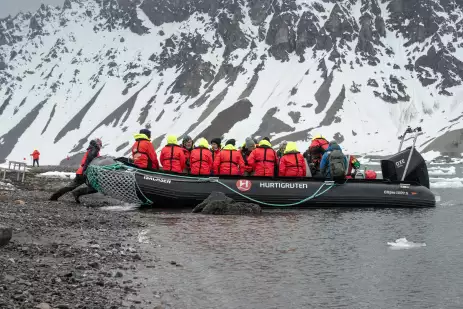
Embark on an Arctic adventure
For those craving a bit more adrenaline, Svalbard delivers. If you're not satisfied to simply admire from afar, you can get right into the heart of it. Hop on a zodiac and weave between towering icebergs. These nimble inflatable vessels allow you to get up close to the ice, the wildlife, and the silence.
Prefer your adventures on foot? Strap on your crampons and hike across ancient glaciers, guided by experts who know exactly where to tread. It’s a surreal experience - walking on ice that’s thousands of years old, surrounded by peaks that have never known a tree. In the colder months, the landscape transforms into a snow-covered playground. Dog sledging across the tundra, pulled by a team of eager huskies, is exhilarating. And if speed is your thing, snowmobiling through the Arctic wilderness offers a thrilling way to cover ground and feel the bite of the polar wind on your cheeks.
Svalbard is the kind of place where “once-in-a-lifetime” doesn’t feel like an exaggeration.
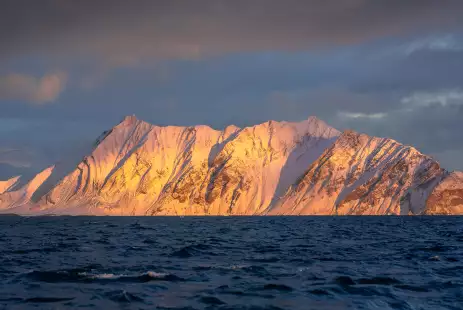
Experience the Midnight Sun or Northern Lights
The light - or at times, complete lack of it - makes the Svalbard sky just as dramatic as the landscapes beneath it. Visit between late September and mid-March, and you might be lucky enough to witness the northern lights dancing across the heavens. This is Aurora Borealis at its most mesmerising: vivid ribbons of green and violet swirling through the polar night. Thanks to Svalbard’s cold, dry climate and its location well within the auroral oval, the conditions here are ideal—often clearer and more consistent than anywhere else in the northern lights belt.
From mid-November to late January, the sun doesn’t rise at all. This is the Polar Night, a time of 24-hour darkness that somehow feels more magical than bleak. It’s a season of candlelit cafés, stargazing strolls, and skies that shimmer with celestial drama.
Then, just when you’ve forgotten what daylight looks like, the sun returns - and refuses to leave. From late April to late August, Svalbard is bathed in the surreal glow of the midnight sun. For four months, the sun never dips below the horizon, casting a golden light over glaciers, mountains, and fjords at all hours of the day and night. It’s a time when the Arctic feels wide awake, and the possibilities for exploration are endless.
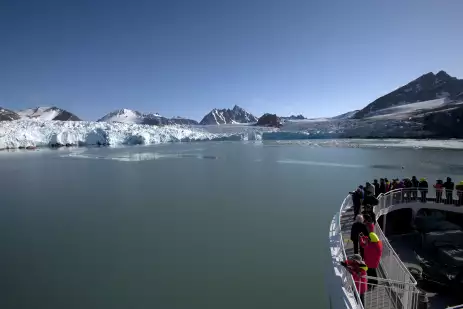
What is the best way to see Svalbard?
If you want to experience Svalbard in all its icy glory, cruising is undoubtedly the way to go. Expedition cruises allow you to reach remote fjords, islands, and glacial inlets that are simply inaccessible by land -places where polar bears roam and icebergs drift silently through the sea. Travelling aboard a smaller expedition vessel means a more intimate experience, with fewer guests and a personalised touch that larger ships simply can’t offer. Onboard, you’ll be joined by scientists and naturalists who bring the Arctic to life through engaging talks and guided excursions, sharing insights into everything from glaciology to polar wildlife. These vessels often prioritise sustainable practices, designed to minimise environmental impact and preserve the fragile ecosystems you’ve come to admire.
Facts about Svalbard:
What language do they speak in Svalbard?
Norwegian is the official language 3, but you’ll also hear English, Russian, and a smattering of other tongues thanks to the international research stations and adventurous expats.
What Is the weather like in Svalbard?
In a word: brisk. Summers hover around 7°C (45°F), while winters dip well below freezing 4. But it’s not just the temperature that makes Svalbard’s climate unique—it’s the light. From April to August, the sun never sets. From October to February, it never rises. Cue the midnight sun and polar night, each with its own kind of magic.
How to get to Svalbard?
Despite its remote location, getting to Svalbard is surprisingly straightforward. Most travellers fly from Oslo or Tromsø, with direct flights to Longyearbyen taking between 1.5 and 3 hours. Just don’t forget your passport - Svalbard is outside the Schengen zone, so ID checks apply even for Norwegians.
What's the currency in Svalbard?
The Norwegian Krone (NOK) is the currency, and credit cards are widely accepted - there's even an ATM in Longyearbyen.
Can you get a mobile phone signal in Svalbard?
Internet and mobile coverage are good in town but limited in remote areas.

